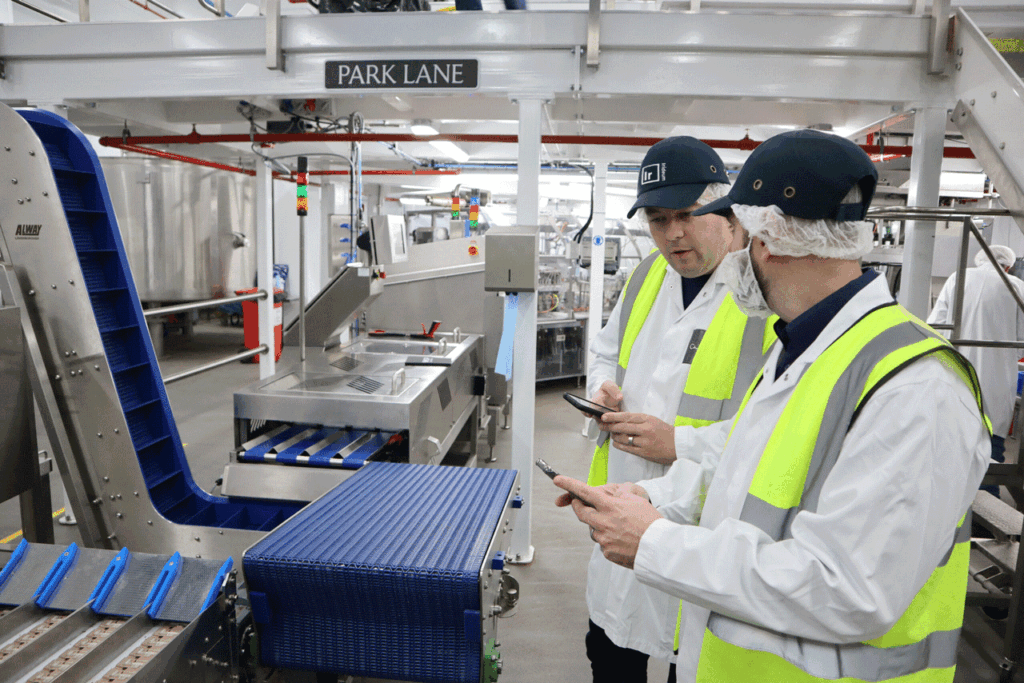

In this article, we speak with our Consultancy Manager, Simon Brough, to explore the crucial machinery safety watchouts for businesses in 2024. With a robust background in logistics and manufacturing and having completed hundreds of PUWER assessments across the United Kingdom, Simon shares his top insights, drawn from firsthand experience, aiming to heighten safety awareness and spotlight Irideum’s expertise in machinery safety.
Non-compliant Guarding
Guarding serves as a defence against hazardous moving parts of machinery. Despite established standards such as ISO13857 and BS EN 415-10, our PUWER assessments frequently reveal instances of non-compliant guarding. These shortcomings, including inadequately secured guards or apertures allowing access to dangerous areas, pose significant risks to operators. It’s crucial to understand that these risks can lead to serious injuries or even fatalities. A PUWER assessment will ascertain whether the guarding you have in place with new or existing machinery meets PUWER regulations and is adequate to keep machinery operators safe.
Simon commented, “This is probably the most commonly observed non-compliance we see. Fixed guards and tunnel guards often have non-compliant apertures that allow access to hazardous moving parts of the machine. A common mistake made is that people believe 850mm is the target safety distance.
However, both ISO 13857 and BS EN 415-10 have different safety distances for aperture sizes, aperture shape and mechanical install i.e. if there is a tunnel guard with a conveyor running through it.
In some instances, the introduction of further guarding can also present additional hazards, so we always try to recommend the best practicable solution.”
Documentation Oversight
Comprehensive documentation forms the backbone of machinery safety management. As part of our PUWER assessments, we emphasise the importance of ensuring clients possess all necessary documentation, including Operation and Maintenance Manuals, Declarations of Conformity/Incorporation, and schematics for electrical, pneumatic, or hydraulic systems.
Task-specific Standard Operating Procedures (SOPs) and Safe Systems of Work (SSOWs) are crucial components. Conducting PUWER assessments before initial use enables you to verify essential documentation’s presence and accuracy, mitigating oversight risks.
Simon commented, “OEM documentation is something we always ask for, and we find it very common that this information is not available. O&M Manuals allow us to confirm the machine’s functionality, particularly if the machine is not running when we conduct an assessment. It also details information on specific tasks, particularly around maintenance activities. Electrical schematics are also important when functionally testing controls/safety devices to confirm these have been wired correctly.
SSOWS/SOPS and Risk Assessments also give us an idea of how operators interact with the machine to determine if there are any unsafe working practices.”
Hazardous Energy Isolation
Proper isolation of hazardous energy sources, in compliance with standards like BS EN 60204-1, is fundamental to safe maintenance procedures. Through PUWER assessments, we often encounter instances of non-compliance, leading to unexpected machinery movement during energy disconnection/reconnection. Addressing these issues requires a proactive approach, including heightened awareness and implementation of additional controls to mitigate the potential for operator injuries.
Simon commented, “Hazardous energy isolation is extremely important, particularly for maintenance activities. For example, pneumatic moving parts commonly move after/during energy disconnection/reconnection. In this instance, we would always recommend that air be dumped so no residual air is in the supply when carrying out internal maintenance or clearing a jam.”
Emergency Stop Span of Control
Emergency stop controls are pivotal safety mechanisms in machinery operation. However, our assessments frequently uncover instances where the activation of an emergency stop affects adjacent machinery, posing additional risks. Understanding the span of control of emergency stop systems is crucial. We recommend clearly displaying any impact on adjacent machinery to operators and fostering site-specific knowledge to manage emergency stop control aspects effectively.
Simon commented, “For standalone machinery, this isn’t as important; however when you are dealing with a piece of machinery that forms an assembly line, it is essential to check if the emergency stop is linked to upstream/downstream equipment. We often find that if you press an emergency stop, it stops the machine and other equipment on the line, but some equipment automatically restarts without requiring a local reset, for example. The end user and operators must be fully aware of what equipment is affected and not affected when actuating an e-stop on the machine.”
Maintenance of Machinery
Maintaining equipment is extremely important for it to run effectively, efficiently, and, more importantly, safely. Having a regular maintenance schedule for equipment ensures that the machine is in a condition where it can be operated safely.
Simon commented, “Evidence of maintenance inspection records or an inspection portal is something we ask to see when assessing equipment. When we see a machine in poor condition, i.e. oil leaks, damaged/loose guards, guards missing fixings or broken control functions, it is common that a maintenance schedule is not in place or being adhered to. Poor maintenance on a machine can lead to it running in an unexpected manner or present additional risks to operators, i.e. if a guard has come loose or is damaged, this could increase the risk to an operator to a higher severity than if the guard wasn’t there.”
In summary, our focus at Irideum revolves around supporting our clients in managing associated risks and necessary actions through conducting comprehensive PUWER assessments backed up by clear and defined actions and recommendations. By adhering to PUWER regulations, you can mitigate risks and uphold safety standards in your business. We hope these watchouts from Simon are helpful to you and your business in effectively managing machinery safety in 2024.
Follow the link below to speak to a member of the Irideum team and learn more about our PUWER services.
Copyright Irideum, 2025 | Website by Vandal Marketing